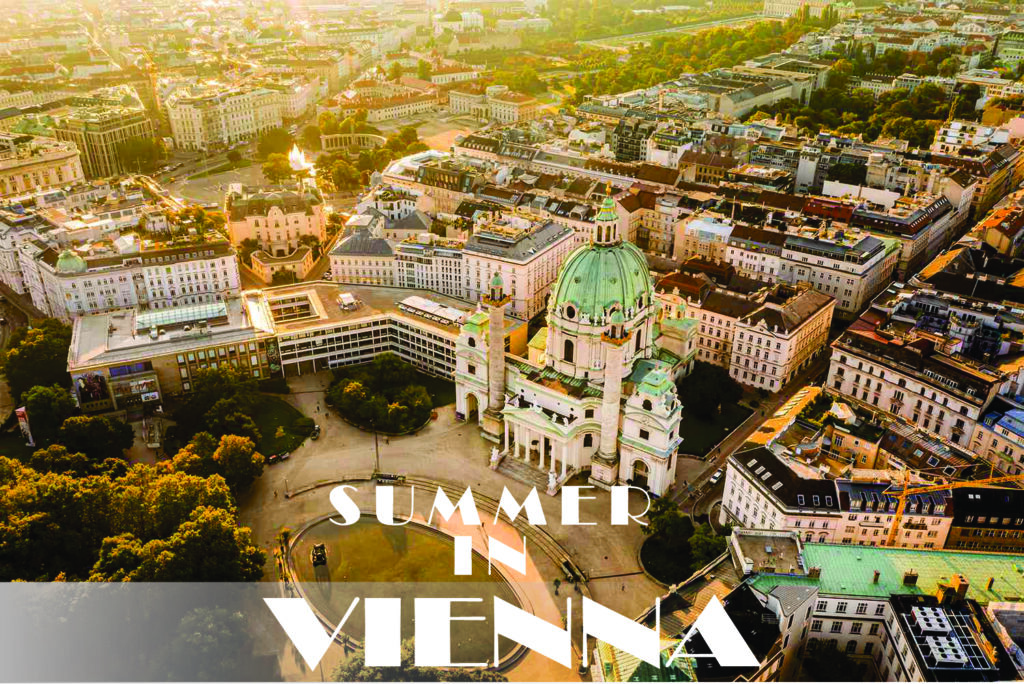
Europe, generally known as the birthplace of Western civilization, is one of the most diverse and culturally rich continents globally. The continent boasts over 200 languages spoken across different cultures and regions.
Visiting Europe embodies an aura of fascination, starting from the picturesque on the streets of Paris to the iconic landmarks in Rome. You also won’t want to miss the European wildlife reserves, from Saxon Switzerland National Park in Germany to The Camargue in France and Hoge Kempen National Park in Belgium, among others.
In this guide, we will journey through Europe together as we unveil the vibrancy of the European continent, including European food, European languages, tourist destinations, and places to spend your holiday in Europe.
Irrespective of whatever you plan to do in Europe, the continent has something fulfilling for everybody.
Contents at a Glance
- 1 Historical Perspective of Europe
- 2 Cultural Richness and Diversity of European Countries
- 3 Travel Destinations Par Excellence
- 4 Planning your European adventure
- 5 Top Tourist Destinations in Europe
- 6 Must-try Dishes on your Next Trip to Europe
- 7 Frequently Asked Questions
- 8 Conclusion – An Exploratory Guide To Europe
Historical Perspective of Europe
The evolution of Europe transcends from the prehistoric age through the classical antiquity and Middle Ages up till the modern era. Europe’s majestic cathedrals serve as a rich tapestry for many travelers who may have come to visit Europe for any reason. With 50 countries in Europe, 44 of them having their capital city within the European continent, it becomes easy to have an in-depth exploration of Europe and have a thrilling trip through time.
Cultural Richness and Diversity of European Countries
The European culture is rich in diversity as every nation conveniently boasts of its unique customs and traditions, food, and languages, which results in a culturally diverse and vibrant environment.
As you prepare for a trip to Europe, you may want to explore and experience an array of cultural experiences, starting from the flamenco rhythm, which is most prominent in southern Spain, to treasures like the Mozartkugeln, a three-layered chocolate-coated sweet, found in Austria. Irrespective of whatever you envisage, different countries provide varying depths of cultural exploration, but you enjoy your next holiday in Europe.
Travel Destinations Par Excellence
Europe is undoubtedly the most visited and popularly traveled continent because of the countless number of eye-catching tourist destinations that encourage people from various parts of the world to embark on a holiday to Europe.
From the magnificent Eiffel Tower in Paris to Barcelona’s Sagrada Familia and Gaudí Sites in Spain, Europe promises an amazing trip filled with adventures and surprises. You may have begun to wonder what these tourist destinations are. You don’t have to worry too much. Stay with us till the end as we will explore stunning tourist destinations in Europe.
Planning your European adventure
Setting out for a trip to Europe is often an exhilarating (change it) experience, especially when you are traveling to any country in Europe for the first time.
Prepare and plan for the journey ahead so that you can enjoy the best of Europe. In this section, we will provide you with a complete guide on how to better prepare for your visit to Europe.
1. Research your Destination
Europe is unarguably a vast continent with several attractive destinations. First, you need to start by knowing the details of the environment in which you are going, whether your trip to Europe is for an official purpose or tourism and relaxation purposes.
Furthermore, you should consider other factors, including the season, local events and festivals, and the amount needed to enjoy a comfortable lifestyle during your stay in Europe. If going on an expedition, you may also need to outline a list of cities and countries in Europe you want to visit.
2. Set a Budget
Setting a budget when embarking on a journey helps you to properly and effectively plan for that journey without facing any hassle in the long run. Your travel budget will determine whether your voyage to Europe will be an affordable or expensive one.
Interestingly, you can have a cheap vacation in Europe if you plan for a short-term tour. It is pertinent you set a realistic budget that fits your purse and can efficiently cover your travel expenses including food, transport, accommodation, and other relaxation expenses.
You may also want to consider booking your accommodations before your travel to get them at better rates compared to booking on arrival.
3. Prepare your Travel Documents
Having the necessary travel documents is probably the most important detail to consider when planning for a European adventure requirement. First, you need to check your passport validity and ensure that it is still within the minimum requirement of 6 months expiration as required (change it) by many European countries.
Also, If you are traveling from a country outside of Europe, you must check the visa requirement and ensure that you meet the all criteria needed for your category. Most European countries allow visa-free entry for short-term stays, usually up to 90 days, for citizens of some countries including the US, Australia, and Canada, but it is essential to affirm specific requirements related to the country you are taking off from.
Furthermore, considering travel insurance protects you against unpredicted emergencies like missing luggage, medical emergencies, or canceled trips.
Top Tourist Destinations in Europe
1. Crooked Forest, Poland
How over 400 pine trees in the crooked forest of north-western Poland became bent and formed the shape of an inverted question mark remains a mystery.
However, this feature makes it one of the most protected natural monuments of Poland. So, you do not want to miss this magical experience the moment to land in Poland.
2. Eiffel Tower, France
Perhaps you’re planning a tour to France, then the popularly known Eiffel Tower in Paris is the site to enjoy the best of Europe. The tower was constructed with wrought iron and is located at the center of Paris’ Champ de Mars, which had originally been built to serve as an entry to the World’s Fair in 1889.
There were many criticisms against engineer Gustave Eiffel, with several talks about the impossibility of completing the tower. At the time of construction and opening of the Eiffel Tower in March 1889, it was the tallest structure in the world, spanning about 324 meters tall, equivalent to an 81-story building.
The first two levels of the Eiffel Tower are easily accessible using either the staircases or the elevator. However, the third level can only be accessed via an elevator. You can better appreciate the beauty of the Eiffel Tower when you see the golden light illumination at night.
3. The Leaning Tower of Pisa, Italy
The Leaning Tower of Pisa is one of the famous tourist attractions in Europe. It is one of the most primitive structures in Italy, with a lean of about 5.5 degrees.
Massive work was done on the tower to straighten it. However, they could only adjust it to 4 degrees. The slant position of this tower has made it a tourist view for many visitors in Italy.
4. Svalbard, Norway
If you’re planning to get an exquisite vacation in Europe, and you have dreamt of visiting the Arctic, then a visit to Svalbard is going to be an awesome experience. Svalbard, formerly referred to as Spitzbergen is located in the Arctic Ocean and is found midway between Norway and the North Pole. The Islands have a longitude between 10o and 35o to the East and latitude between 74o and 85o to the North.
You also don’t want to miss the beautiful wildlife encounters, as the shores of Svalbard are filled with species of cetaceans, walruses, seabirds, and seals. Oh yes! Your experience in Svalbard is not complete without an encounter with the Arctic fox and the reindeer (Rangifer tarandus), a species of deer but more native to the Arctic regions of Europe.
Must-try Dishes on your Next Trip to Europe
Whenever you go on a vacation or business trip to Europe, ensure you never miss European food. Ensure to enjoy a taste of the culinary.
1. Boeuf Bourguignon, France
The Boeuf Bourguignon is a well-known French dish made of fork-tender meat, some vegetables, and a thick red wine sauce. As its name portrays, the beef stew comes from Burgundy (Bourgogne), where the red wine and quality cattle meat are produced and are integral constituents for making the boeuf bourguignon.
In addition to the satisfaction and enjoyment of eating the Boeuf Bourguignon, it also provides significant proteins and calories.
2. Paella, Spain
Paella is the ultimate Spanish cuisine that you don’t want to miss. Birthed in Valencia, the delicacy got its name from the expansive, shallow pan in which it is cooked over an open flame. It is made of short-grain rice, stock, wine, and vegetables. Saffron, a brightly colored spice, gives the rice its rich yellow color.
Paella de marisco is the shellfish variant, typically served with chicken or rabbit; diners who are undecided and want the best of both worlds might have paella mixta (mixed paella).
3. Belgian Waffles
The Belgian waffles come in two variants- the Liège waffles, which are chewier and sweeter, and the Brussels waffles, which are lighter and have deeper pockets. They can be served with whipped cream, chocolate spread, syrup, confectioner’s sugar, fruit, or ice cream.
They are frequently eaten for breakfast and occasionally as a dessert. So, on your next trip to Belgium, you can spice up your stay in the country by having a taste of the delectable Belgian waffles.
4. Irish Stew, Ireland
Irish stew is a dish typically served with mutton and vegetables. It is often prepared using a combination of some components, including mutton, potatoes, onions, and water.
Like many other traditional dishes, there are many variations, including adding grains such as pearl barley with additional veggies like carrots and peas.
Interestingly, the Irish stew delicacy is found in every bar on the island and can comfortably be served with soda bread and any stout beers of your choice.
Frequently Asked Questions
What are the best places to visit in Europe?
There are several places that you can visit in Europe. However, the best places you should explore when you are visiting Europe are Paris, Rome, the Swiss Alps, London, Amsterdam, Barcelona, Florence, Prague, Venice, Athens and others we cannot capture in this exploratory guide to Europe.
What is the best time to visit Europe?
Visiting Europe depends on your preferences and your reasons for embarking on a trip to Europe. However, the spring season, usually from April to June, and fall, usually from September to November, have a calm ambiance that enables you to enjoy your sightseeing activities and overall visit to Europe.
What currency is spent in Europe, and what should I take note of when traveling?
The euro is the generally approved currency in 20 out of 27 countries under the European Union. To make your trip to Europe hassle-free, it is advised that you have debit/credit cards as well as some cash. While automated teller machines (ATMs) are available for cash withdrawals in Euros, you may want to confirm conversion rates and make your travel plans known to your bank to prevent issues with card usage.
What is the Weather Condition in Europe like?
Usually, the weather conditions in Europe depend on the seasons. The four main seasons in Europe include Spring (from April to May), Summer – usually the hottest (from June to September), Autumn (from mid-September to mid-November), and Winter -usually the coldest (from mid-November to March).
Are there any safe places in Europe?
While Europe is regarded as the safest continent to visit, taking personal safety measures is essential for your well-being. Always be sensitive about the environment you are staying in to ensure that you’re safe.
Conclusion – An Exploratory Guide To Europe
Europe is not just a destination. It is a continent where you get to experience and explore several options irrespective of your reason for visiting Europe. The continent constitutes a rich tapestry of history, culture, and attractive sight-seeing environments that captivate the attention of travelers and visitors from around the globe.
As you prepare for your next trip to Europe, don’t forget to embrace new and fascinating experiences, and create a lasting memory for your visit to Europe.








